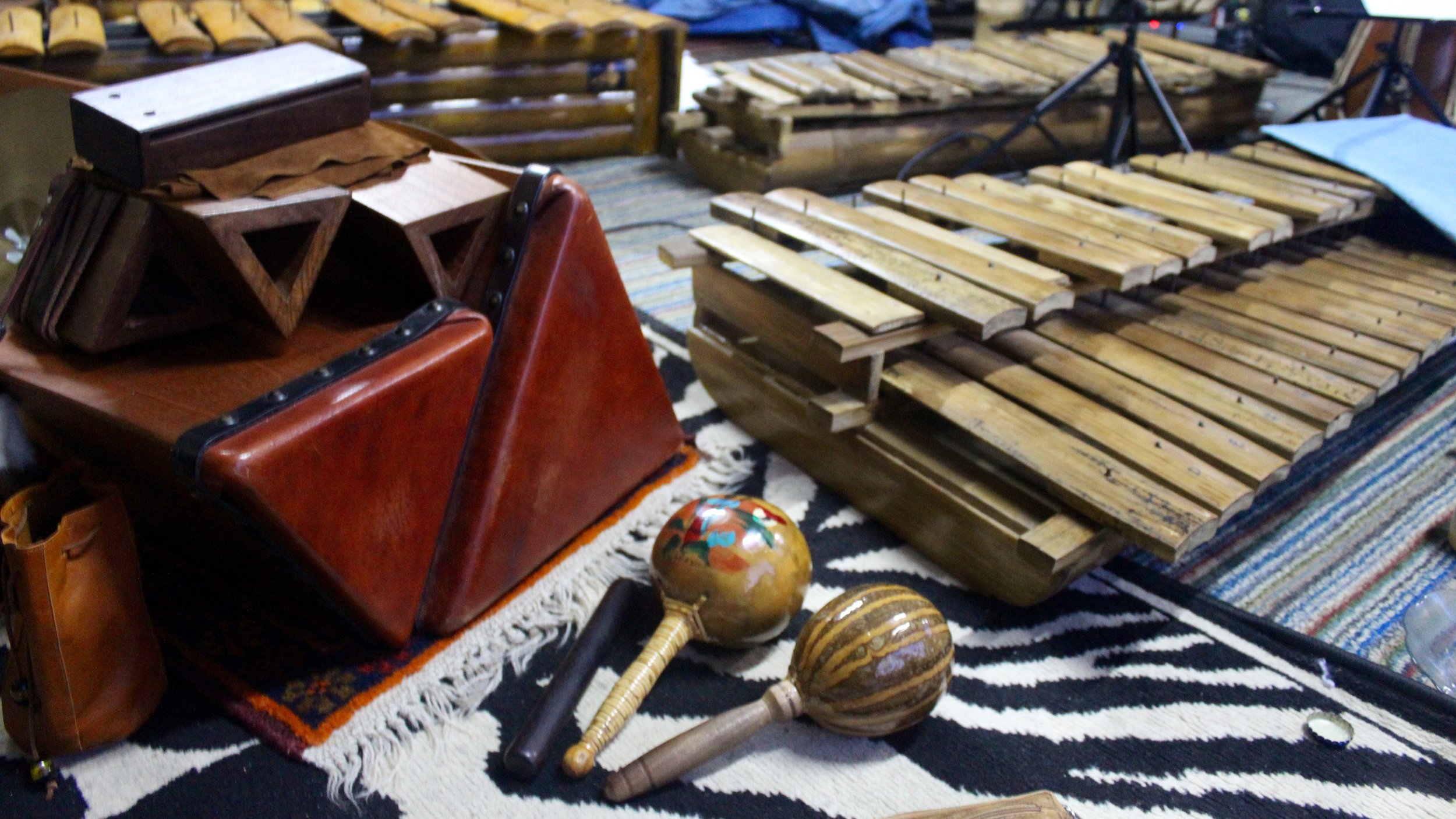Road to Europalia, Pt. 1: Moondog for Gamelan
Location: Lembang, West Java
Sound: Moondog for Gamelan
The eccentric American composer Moondog found inspiration all around him, from the sounds of the New York City streets where he busked to the ritual music of the Native Americans. Perhaps because he was blind for most of his life, his ears were especially open to the world. His music, in turn, was a remarkable hodgepodge of influences, with pieces featuring Baroque counterpoint, jazz rhythms, and odd meter, sometimes all in one work.
As a commissioned project of the Europalia International Arts Festival, Moondog’s work will soon interface with another music of the world: gamelan, the famous percussion ensemble of Java and Bali. For this unique artist residency and concert series, we find not just the meeting of two musics, but of two remarkable artists. From Sweden comes Stefan Lakatos, a man I can only describe as a disciple of Moondog. After befriending and studying with the so-called Viking of 6th Avenue in Germany decades ago, Lakatos has made it his life’s work to maintain Moondog’s legacy, playing the man’s singular instruments and arranging for performances of unheard Moondog pieces around the world. From Lembang, West Java, comes Iwan Gunawan, a gamelan master and composer in his own right renowned for gamelan arrangements of composers like Steve Reich.
While Moondog’s works don’t have the historical connection to gamelan like Reich’s, there is a subtle logic to this pairing. Both Moondog’s music and gamelan are often cyclical and built up from simple rhythms which gain complexity from elaborate layering. It is these elements which made both Moondog and gamelan important influences on the works of minimalist composers like Reich and Philip Glass.
To combine the two, though, is not so simple. While Moondog’s oeuvre is not as wildly chromatic as the Modernist composers of his heyday, his works would simply not be playable on a typical gamelan set, whose instruments are tuned to pentatonic and pentatonic-like scales such as pelog and salendro. To get around this fundamental roadblock, Gunawan commissioned an entirely new set of equal tempered instruments crafted from easily tuned bamboo. The result is a percussion ensemble whose timbre is quite distinct from a typical gamelan’s hallmark metallic sound, but possibly all the more interesting for that.
While it began as a practical choice, this decision to go the bamboo route ended up being a remarkably appropriate one. Bronze gongs and metallophones may be the gamelan sound known the world over, but here in West Java, a revolution in creative bamboo music making has taken the Sundanese cultural world by storm. While the Sundanese and others have been making gamelan-rooted music on bamboo for centuries, a modern movement in bamboo innovation has been slowly growing around the West Java hub of Bandung since the early 2000’s. Likely starting with innovators like Sumedang’s Abah Olot and “happy bamboo” metalheads Karinding Attack, urban and rural Sundanese alike have been experimenting with new, organic instruments which Moondog surely would have loved. These include the gong bambu or bamboo gong, a tuned tube zither which produces an eerie facsimile of a metallic gong’s subharmonic tones, and variations on the angklung bamboo rattle which allow a single skilled musician to play melodies which would normally take the cooperation of a dozen players.
This modern bamboo sound may not be as familiar to Western audiences as classic gamelan, but as a pairing with the music of Moondog, it is perhaps even more appropriate: both sound worlds are rooted in playful experimentation and organic textures. It is no easy feat, though, to maintain the gamelan feel despite the compositions drawing on the tonal Western tradition. Gunawan recognizes that while the Moondog sound will be present in full force, the gamelan element may appear obscured to audiences expecting pentatonic melodies and bell-like metallic tones. Talking at his home in Lembang, West Java, Gunawan explained that gamelan is more than a collection of instruments: it's an ethos, a system of musical teamwork and rhythmic collaboration which shines through even as the relatively foreign sound of Moondog’s compositions threatens to throw off the balance.
Curious to hear what this unprecedented collaboration would sound like, I headed to Gunawan’s homebase at the foot of the Tangkuban Perahu volcano just outside of Bandung. For a few days I took in the development of a whole new world of sound, with never-before-played Moondog pieces interacting with a brand new instrumentarium for the first time. In a rehearsal space sandwiched between strawberry fields and the looming flat-topped volcano, the music arose from a meeting of musical minds. Gunawan, a professor at a local university, had recruited an all-star team of his finest young students. While all raised on the gamelan tradition, they were also all well-versed in Western composition and sight-reading, a must for reading Moondog’s surprisingly complex scores. Gunawan led his team from behind a massive bamboo bass xylophone, looking like a cosmopolitan artiste in his black turtleneck while engaging in a back-and-forth with his pupils in rapid fire Sundanese.
Lakatos, meanwhile, joined and often led from behind his trimba, a Moondog invention consisting of odd, triangular wooden drums fitted with resonant cymbals and played with a maraca in one hand and a clave in the other. A warm, talkative man with a look somewhere between Santa Claus and Moondog himself, Lakatos humbly shared the space with Gunawan and his team, deferring often to local ways of music-making rather than taking advantage of his position as Western Authority. Lakatos had handpicked a selection of nearly twenty Moondog pieces he found most suited for this new percussive context, some of which had only recently been transcribed from Moondog's original braille scores and played here for the first time.
But what does the music sound like? The marimba-like textures of the six bamboo xylophones and the syncopated sounds of Lakato’s maraca brought unexpected textures, sometimes sounding surprisingly like the midcentury exotica of Herb Alpert's Tijuana Brass Band. But unlike the chintzy tinkle of Albert’s marimbas and questionable cultural appropriation, the sound here was elevated by the complexity of Moondog’s music, his many-voiced contrapuntal forms echoing the interlocking rhythmic patterns at the root of gamelan. The resulting sound is as playful as the best of Sundanese gamelan and as fresh as anything out of the burgeoning local bamboo scene. It may not have that famous metallic sound, but it’s twin elements shine regardless, the odd-time morsels of Moondog sharing space with the spirit of Sundanese bamboo.
+++
Moondog for Gamelan Tour Dates (starting this Saturday!)
14/10 Unsound Krakow
19/10 Berghain Berlin (in collaboration with Morphine Records)
26/10 Ancienne Belgique Brussels (in collaboration with Les Ateliers Claus)
28/10 Barbican/LSO St Lukes London (in collaboration with Kazum!)
. More info at the Europalia website here.






